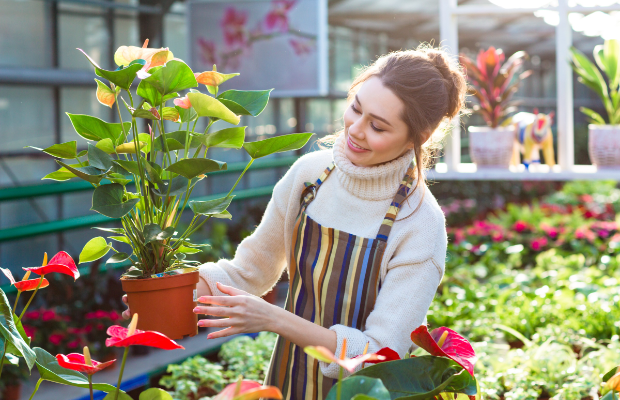As we head closer towards warmer and brighter seasons, now is the perfect time to show your garden some love! Here’s how to spruce up your outdoor space in time for Spring…
Plants for February
February to March is a great time to sow seeds of hardy annuals such as Lavender, Salvias and Cosmos. By sowing early into the year, you or the next owner of the home can enjoy the beautiful flowers for longer – the growing season can then be easily extended from April onwards by carrying out repeated sowings.
If you’re looking to inject some colour back into your garden, February is also a good time to plant some spring and summer flowering-bulbs in pots such as Lily of the valley, Cyclamen and of course, daffodils. While these are dormant in February, it’s always good to plant ahead so that they can start growing as soon as the sun touches them.
Clear away winter
Over the autumn and winter months, you most likely won’t have been deadheading or cutting back foliage on perennials – and this is a great thing! Because of it, the roots were able to stay warm over winter, and the fallen leaves and other debris made a cosy hibernation spot for the garden’s vital insects. In addition, some of the leaves will have acted as compost, enriching the soil with microbial activity.
As the days begin to warm up, you can start cleaning up last year’s perennials. With the soil around the plants now being rich and lush, shoots might already be springing up, and it’s time to expose them to the sunlight so they can thrive.
Mould in the Greenhouse
Winter can cause problems in the greenhouse, and mould attacks in particular are quite common while the days are cold and damp. Mould can be a threat to plants, so you should check your greenhouse plants regularly and don’t water them unless the soil feels dry. On mild winter days, be sure to open up the greenhouse doors to let in as much air as possible. If your greenhouse does get a case of mould growth, cut off all the infected leaves and temporarily move out any plants with severe growth to prevent the spread of infection.
Create a water garden
Towards the end of the month when frosty mornings begin to wear off, you can create a beautiful water garden for your home without fear of it freezing over. Scout the perfect location
for your water garden and start by arranging containers of your choice on flat ground close to a wall or fencing for stability. Any sort of watertight vessel will do so long as it’s at least six inches deep, this could include planters, barrels, buckets, or large ceramic pots. Place rocks and gravel in the bottom of the water-filled containers so that plants have somewhere to attach their roots, and you can then start adding a mixture of submerged plants, such as fanwort and anacharis, marginal plants like horsetail and cardinal flower, and floating plants such as water lettuce and dwarf water lily. This display will look wonderful in your garden come spring when the sunlight is twinkling against the water.
Are you thinking about selling this year? Contact our team of experts today for excellent advice and service




